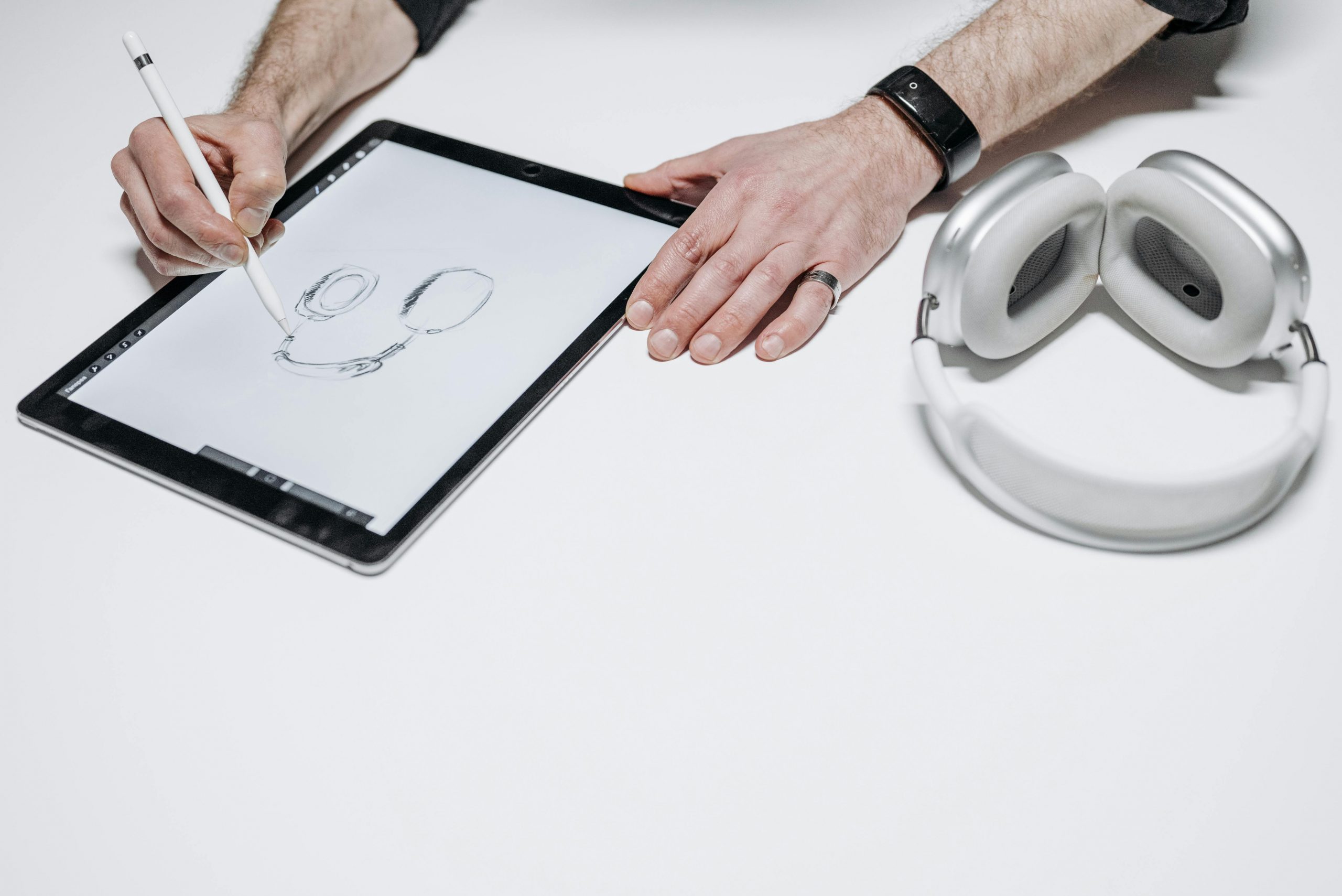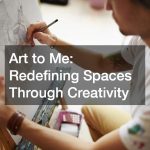Digital art is an exciting and rewarding creative skill, whether you’re drawing for fun, building a career, or just trying something new. With the right tools, techniques, and practice habits, you can improve your digital art skills faster than you might think. This guide will walk you through everything you need to know about how to get better at digital art, even if you’re just starting out.
Why Digital Art Is Worth Learning
Digital art opens up endless possibilities. Unlike traditional media, it gives you the power to experiment without fear of making mistakes. You can undo, layer, and blend with ease—and it’s more accessible than ever thanks to apps and affordable drawing tablets. It’s also widely used in fields like gaming, animation, web design, and advertising.
Learning digital art means gaining a valuable, modern creative skill that can lead to personal enjoyment or even professional opportunities.
Choose the Right Tools
Getting better at digital art starts with using the right tools. You don’t need the most expensive setup to make great art, but having reliable and comfortable tools can make the learning process easier and more enjoyable. The right combination of hardware and software will help you practice efficiently and express your creativity without frustration.
Recommended Tools:
- Drawing Tablet: A drawing tablet allows you to draw directly onto a digital canvas. For beginners, brands like Wacom, XP-Pen, and Huion offer affordable options with solid quality. These tablets plug into your computer and usually come with a stylus. Alternatively, many artists use an iPad with the Procreate app, which combines portability and power in one device.
- Stylus: A good stylus is essential. Make sure it’s pressure-sensitive, which means it responds to how hard you press, helping you create smooth and dynamic lines. Most tablets come with a stylus, but some artists prefer third-party options depending on grip and responsiveness.
- Software: Digital art software is where you’ll spend most of your time, so choose one that fits your style and skill level. Great beginner options include:
- Procreate (iPad only): Popular for its intuitive layout and powerful features.
- Krita (free, Windows/macOS): Open-source and packed with features—perfect for newcomers on a budget.
- Clip Studio Paint: Excellent for comics, animation, and detailed illustrations.
- Adobe Photoshop: Industry standard for professionals, with endless tools and customization.
Tips for Getting Started:
- Try Before You Buy: Many paid programs offer free trials, so you can test them before committing. This helps you find software that fits your workflow.
- Customize Your Setup: Adjust your tablet and software settings for comfort and efficiency. Play with pen pressure, shortcut keys, and brush settings to make drawing feel natural. Setting up a workspace that supports your process will save you time and effort down the line.
- Keep It Simple at First: You don’t need fancy brushes or effects right away. Focus on mastering basic tools like the brush, eraser, and selection tools. As your skills grow, you can gradually explore more advanced features.
Master the Fundamentals First
No matter how advanced your tools are, your skills won’t grow unless you understand the fundamentals. These basics apply to both digital and traditional art.
Key Fundamentals to Practice:
- Line Work: Practice clean, confident lines. Use line variation to show depth and motion.
- Shapes and Forms: Break down complex objects into simple shapes like circles, squares, and triangles.
- Perspective: Learn one-point and two-point perspectives to give your work a sense of space.
- Anatomy: Even if you draw cartoons or fantasy characters, studying real anatomy helps improve accuracy.
- Color Theory: Understand how to use hue, saturation, contrast, and value to make your art stand out.
- Lighting and Shading: Practice using light and shadow to add dimension and drama.
Practice with Purpose
Random doodling is fun, but to get better, you need deliberate practice. That means focusing on specific skills during each session.
How to Practice Effectively:
- Choose one element to focus on per session (e.g., hands, eyes, lighting).
- Set a time limit—30 minutes of focused practice is better than hours of aimless sketching.
- Use reference images to improve accuracy.
- Recreate your favorite artist’s work (for practice only, not to post or sell).
- Keep a sketchbook (digital or physical) to track progress.
Follow Online Tutorials
Learning digital art is easier with guidance. Thanks to YouTube, TikTok, and art websites, tutorials are just a click away.
Where to Find Tutorials:
- YouTube Channels: Art with Flo, Aaron Blaise, Draw with Jazza
- Skillshare & Udemy: Great for structured courses on beginner to advanced digital art
- DeviantArt & ArtStation: Many artists post step-by-step guides
Tip: Try following along with speed paints or digital time-lapse drawings. Pause often and try to recreate sections.
Study Other Artists
Looking at the work of skilled artists can inspire and teach you. Don’t just admire—analyze what makes their work strong.
What to Observe:
- How they use color palettes
- Their line work and brush strokes
- Composition and storytelling
- How they simplify complex scenes
Following artists on Instagram, YouTube, or Behance can also keep you motivated to improve.
Use Layering Like a Pro
One of the biggest advantages of digital art is layers. Knowing how to use them effectively can make your workflow much easier.
Layer Tips:
- Keep your line art, base colors, and shading on separate layers.
- Label your layers for easy organization.
- Use clipping masks for clean shading.
- Merge layers only when you’re sure you won’t need to make changes.
Improve by Drawing from Life
Even if you want to draw cartoons, fantasy art, or anime, drawing from real life helps build observation skills and understanding of form.
Try This:
- Draw household objects using different angles.
- Practice figure drawing using photos or life drawing websites.
- Do daily sketches of your surroundings, pets, or people.
Get Feedback and Learn from Mistakes
You can grow faster by showing your art to others and learning from constructive criticism.
Where to Share for Feedback:
- Reddit communities like r/learnart or r/digitalpainting
- Discord art servers
- Facebook art groups or forums
Tip: Don’t take critique personally. Every artist starts somewhere, and mistakes are part of the process.
Make Digital Art a Habit
Getting better is all about consistency. Aim to create a routine you can stick with.
Tips to Build a Habit:
- Set aside 15–30 minutes daily for art.
- Join art challenges like Inktober or SketchDaily.
- Keep a digital art journal to track your progress and goals.
Explore Different Styles
When learning how to get better at digital art, it’s easy to fall into the trap of copying one style or sticking with what feels comfortable. But growth comes from exploration. Trying out different art styles not only builds your skills but also helps you discover what you truly enjoy and what fits your creative voice.
Try These Approaches:
- Cartoon and Stylized Characters: These styles simplify features and exaggerate expressions. They’re great for learning about character design, movement, and storytelling through visuals.
- Realism and Portraits: Practicing realistic drawing teaches you how to observe details like shadows, proportions, and anatomy. It’s a great way to train your eye and improve your control.
- Landscape Painting: Creating environments—like forests, cities, or fantasy worlds—helps with learning perspective, lighting, and mood.
- Comic or Manga Panels: Telling stories through sequential art can improve your layout skills, pacing, and dialogue placement. This is perfect for artists interested in visual storytelling.
- Abstract and Color-Focused Art: Playing with shapes, textures, and colors allows more freedom. It encourages creativity and helps you understand visual balance and emotional expression.
Why It Matters:
- You’ll learn new techniques that can be mixed into your main style.
- It helps you avoid burnout by keeping your work fresh and fun.
- Experimenting expands your portfolio and versatility.
By stepping out of your comfort zone and exploring different styles, you’ll not only gain technical skills but also get closer to discovering what kind of artist you want to be.
Common Mistakes to Avoid
Even dedicated artists can get stuck. Here are a few common mistakes that slow down progress:
- Over-relying on undo: Mistakes are learning tools.
- Ignoring fundamentals: Fancy effects won’t help if your base is weak.
- Comparing too much: Everyone learns at a different pace.
- Quitting too soon: Growth takes time—don’t give up too early.
Tools to Speed Up Your Learning
As you gain experience, tools can help speed up your process and improve your results.
Helpful Tools:
- Brush Packs: Many artists offer free or low-cost brushes online.
- Grids & Guidelines: Built into most programs to help with symmetry and perspective.
- Color Palette Generators: Tools like Coolors or Adobe Color make choosing colors easier.
- Time-lapse Playback: Reviewing your drawing process can help you spot areas to improve.
Can Digital Art Be a Career?
Yes! Many industries need digital artists, including:
- Animation studios
- Game design companies
- Marketing and advertising
- Comic and book publishing
- Web and app design
To go pro, you’ll need a strong portfolio, consistency, and often some networking. Sites like ArtStation, Behance, and Instagram are great places to show off your work.
Final Thoughts
Improving your artistic skills is a journey that requires patience, consistency, and a willingness to try new things. Focus on building a solid foundation, practice regularly, and don’t be afraid to make mistakes—they’re part of the learning process.
Whether you’re aiming to turn your art into a career or simply want a creative outlet, the digital world offers endless opportunities to learn and grow. Use tutorials, explore new styles, and challenge yourself a little more each day.
So take a deep breath, open your favorite drawing app, and keep going. Your next great piece might be just a sketch away.




